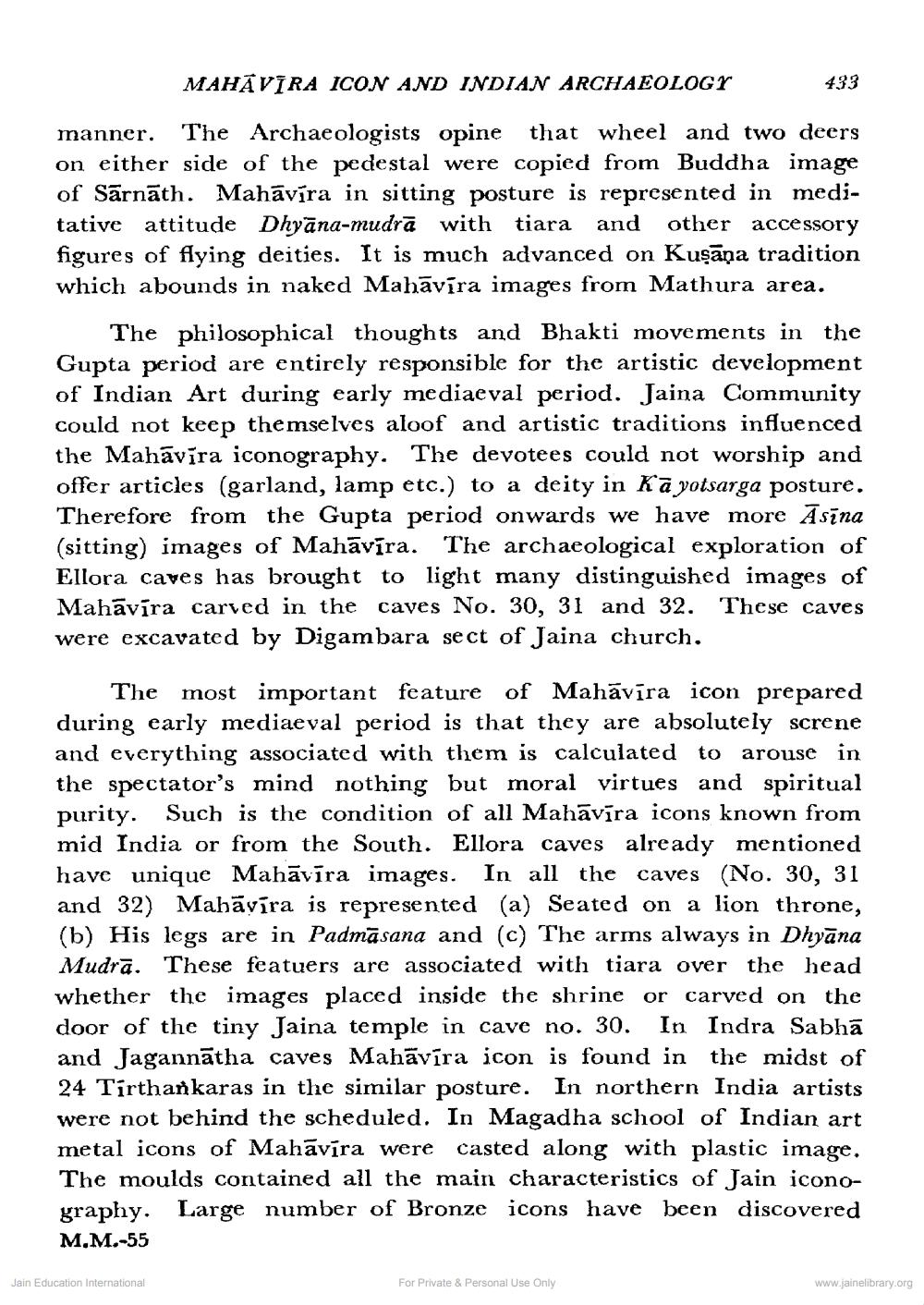________________
MAHĀVĪRA ICON AND INDIAN ARCHAEOLOGY
manner. The Archaeologists opine that wheel and two deers on either side of the pedestal were copied from Buddha image of Sarnath. Mahāvīra in sitting posture is represented in meditative attitude Dhyana-mudra with tiara and other accessory figures of flying deities. It is much advanced on Kuṣāņa tradition which abounds in naked Mahāvīra images from Mathura area.
433
The philosophical thoughts and Bhakti movements in the Gupta period are entirely responsible for the artistic development of Indian Art during early mediaeval period. Jaina Community could not keep themselves aloof and artistic traditions influenced the Mahāvīra iconography. The devotees could not worship and offer articles (garland, lamp etc.) to a deity in Ka yotsarga posture. Therefore from the Gupta period onwards we have more Āsīna (sitting) images of Mahāvīra. The archaeological exploration of Ellora caves has brought to light many distinguished images of Mahāvīra carved in the caves No. 30, 31 and 32. These caves were excavated by Digambara sect of Jaina church.
The most important feature of Mahāvīra icon prepared during early mediaeval period is that they are absolutely screne and everything associated with them is calculated to arouse in the spectator's mind nothing but moral virtues and spiritual purity. Such is the condition of all Mahāvīra icons known from mid India or from the South. Ellora caves already mentioned have unique Mahāvīra images. In all the caves (No. 30, 31 and 32) Mahāvīra is represented (a) Seated on a lion throne, (b) His legs are in Padmāsana and (c) The arms always in Dhyāna Mudra. These featuers are associated with tiara over the head whether the images placed inside the shrine or carved on the door of the tiny Jaina temple in cave no. 30. In Indra Sabha and Jagannatha caves Mahāvīra icon is found in the midst of 24 Tirthankaras in the similar posture. In northern India artists were not behind the scheduled. In Magadha school of Indian art metal icons of Mahavira were casted along with plastic image. The moulds contained all the main characteristics of Jain iconography. Large number of Bronze icons have been discovered M.M.-55
Jain Education International
For Private Personal Use Only
www.jainelibrary.org




